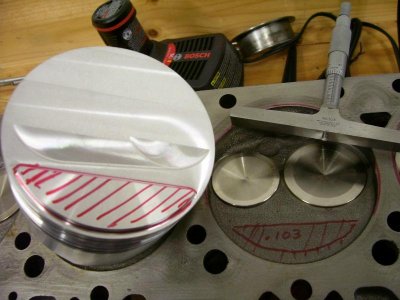Mike67
Well-Known Member
I was wanting to get some input from some of you seasoned moparnatics.... I bought a short block last year for my 67 Coronet, .060 KB step pistons, stock stroke steel crank and it came with the XE275HL K kit (not installed). The pistons look to be .010-.015 out....the guy told me this ought to be around 10.2-10.5 cr with 906's. Does this sound right???
The heads I have, they are rebuilt & have some mild pocket porting, bee as valves & springs, locks, guides but I have not cc'ed them to verify they are 84 either... This will be a weekend street car Doug's 2" headers,Crane adjustable rockers- non roller, 727, 2800, 3.73 gears. Will this be a decent setup? What problems can I expect?
The kit it's brand new and if possible I would like to use it to avoid having to spend a bunch more $$$$$ as I am a low budget kind of guy.... Two daughters are a blessing but man are they expensive!!!
Thanks to all!
The heads I have, they are rebuilt & have some mild pocket porting, bee as valves & springs, locks, guides but I have not cc'ed them to verify they are 84 either... This will be a weekend street car Doug's 2" headers,Crane adjustable rockers- non roller, 727, 2800, 3.73 gears. Will this be a decent setup? What problems can I expect?
The kit it's brand new and if possible I would like to use it to avoid having to spend a bunch more $$$$$ as I am a low budget kind of guy.... Two daughters are a blessing but man are they expensive!!!
Thanks to all!

















